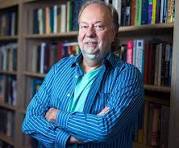For part 4 of our ongoing series of dialogues with jazz radio programmers/show hosts we hear from Brad Stone, who broadcasts jazz programming out of a streaming platform from just south of the San Francisco Bay Area. And we hear from my former WPFW colleague Keanna Faircloth, who is more recently formerly of WBGO, and who has recently launched a new, limited time jazz radio broadcasting series with a promise of future series.

BRAD STONE: With 45 years of radio experience, at several different stations and under different circumstances, how to program great jazz radio can vary quite a bit depending upon those circumstances. I will attempt to describe my approach to jazz radio programming, given three different scenarios: 1) my current program: a 2.5 hour weekly program that streams on demand on SoulandJazz.com; 2) my approach to programming a terrestrial radio program at a university station that featured, in part, jazz, and 3) how I would approach a major jazz station playing jazz 24/7 (or something close to that!).
What for me constitutes a well-rounded jazz radio program? My current show, “The Creative Source”, has been running on SoulandJazz.com for over 10 years now. The show is typically 2.5 hours in length. My approach is to feature overwhelmingly new releases. There are so many excellent new jazz releases (now more in number than ever before). I am very passionate about giving these new releases by today’s artists an outlet where they can be heard and get even greater exposure. I spent 20-30 hours a week listening to new releases I’ve been sent as promos and then select the very best for airplay. I emphasize progressive jazz, jazz fusion, today’s current artists, and original compositions. I aim for a balanced approach in terms of the sub-genres of jazz: i.e. piano trios, quartets, quintets, big bands, jazz orchestras, etc. I also program some vocals – mainly those that are original, new takes on standards, progressive, or out of the ordinary. The latter part of my program is devoted to more progressive material – jazz that is often labeled ‘outside’, experimental, challenging, avant-garde, etc. I strongly believe that this type of music deserves a place to be heard as well.
I did terrestrial radio at several stations and each was programmed a bit differently, but I’ll focus here on my work at KSJS-FM, the San Diego State University radio station. For many years the weekend format was given over to jazz programming. I served as the Music Director for this portion of their programming for 25 years. I had the DJs operate from a clock, which called for different categories at different times of the hour. There was an emphasis on new releases – 6 of the 11 slots per hour were tracks selected from Heavy, Medium, and Light rotations of new releases, which I selected and partially changed once a week. The other 5 slots per hour were given to DJ options – they could play a new release, a track from an album in the library, etc. This provided the DJ a means to put his/her individual stamp on their program. I liked to think opf it as a 50-50 proposition, in terms of the control, between me as the music director and the individual show host. Locally, we have a rather vibrant jazz scene in the San Jose/greater SF Bay Area, so renowned artists who happen to live locally were emphasized. Also, artists who were playing live in town were featured. A significant amount of jazz fusion (jazz-rock, or jazz-funk, not smooth jazz) was a part of our sound – a popular sub-genre in our geographic area. A couple of us did regular interviews with artists (either live in-studio or phone interviews).
How would I program a 24/7 jazz station? Well, that woul;d be a wonderful job to have! I would start with designing a clock that might be something like 60-40 to 40-60 new releases to classics and standards. I might suggest 50% new releases, 40% classics, and 10% re-currents (albums that are, say, between a few months old to 10 yearts old – these often get left out of the programming on major stations. This approach gives a nice emphasis on new material, yet holds the interest of an audience by playing music that is both timeless and familiar (important to the history of jazz). This would include Louis Armstrong, Duke Ellington, Count Basie, Charlie Parker, Max Roach, Bill Evans, Miles Davis, Bud Powell, Dizzy Gillespie, John Coltrane, just to name a few.
There are always special occasions that one needs to program for: birthdays of the masters, deaths in the jazz community, artists performing locally, special holiday observances (Black History Month; Jazz Appreciation Month; Christmas, etc.). I think it is important to include jazz from around the world – jazz as America’s classical music has become the world’s music, so including jazz from Africa, Europe, Asia, South America, etc. should be included in the regular rotation, not simply relegated to a specialty show – as it is an important and essential part of the genre.
There are many other considerations to effectively programming a jazz station. Factors such as emphasizing artists from a particular locale, balancing instrumentation (e.g. albums by leaders who are trombonists, trumpeters, pianists, drummers, etc.), featuring women artists without mentioning that they are women (which I think, albeit well-intentioned, can actually be degrading), sound quality of recordings, length of tracks, the number of appropriate tracks per each album that the station is going to play, tempo, mood, etc. Day-parting [factoring in time of day from stylistic perspectives] is also a consideration for 24-hour jazz stations, as well as the inclusion of specialty shows, interviews, special productions, features, etc.
Overall I think a station should also set the tone of educating the listener without being snobby or ‘looking down our noses’. For example including little tidbits of information, to educate while being inclusive and welcoming. It is important to regularly emphasize the African American roots of jazz, and its various influences in its origin, as well as its continued development and evolution to this day (e.g. incorporating other music genres, such as Afro-Caribbean, Brazilian, classical, rock, hip hop, reggae, township, etc.) and making these a part of jazz. Overall, the emphasis of a jazz radio program should be about the music, not about the announcer – minimizing talk by giving only some information each set (e.g. mentioning players on a particular cut/album, but not for every song in a set). The music speaks for itself!
In each case, I believe that it is vital to program with the intent of gearing towards a younger listening audience. Young listeners are our audience of the future. Many of us who are passionate about jazz were exposed to it at a very early age. For me it was Mom’s records and TV appearances: Louis Armstrong, Ella Fitzgerald, Herb Alpert, Tony Bennett, Bill Evans Trio, Nat Cole, etc. Part of this equation is the prominent inclusion of the many fine releases by today’s current young artists. Jazz is always moving forward and I believe in programming that reflects that. I am passionate about jazz radio programming and I know that many of my fellow radio programmers are too. I love what I do and I hope that translates into what the listeners get to hear!

Keanna Faircloth: To me a well-rounded jazz radio program embodies the concept of “Sankofa” – it looks back at the origins of the genre, and it connects it to those artists that are contributing to its evolution. It is one that is mindful of those listeners who may consider themselves “purists”, yet invites them to consider the sonic trajectory of the genre. By doing thos, we also make space for the next generation of listeners and fans.
Editor’s note: Keanna Faircloth’s most recent jazz radio venture was a 6-part limited series called “Jazz Beyond Tradition”, which launched on WJCT Public Media at 89.9FM in the Jacksonville, FL community as a six-episode series she co-hosted with drummer-bandleader Ulysses Owens that ran April 21st through May 26, 2024. “It was a 6-part series. However, we will do another season later this year/early next year,” she informed the Independent Ear.
Keanna Faircloth: Jazz Beyond Tradition is a space for conversation and music coverage. An exploration of jazz voices from the past, present and future. This show features engaging interviews with national and international artists and public figures alike. Keanna Faircloth and Ulysses Owens, Jr. chat with musicians on location at festivals, venues, and in the studio, with a focus on jazz beyond the tradition; honoring our elders while creating space for the voices of tomorrow in jazz and beyond.
